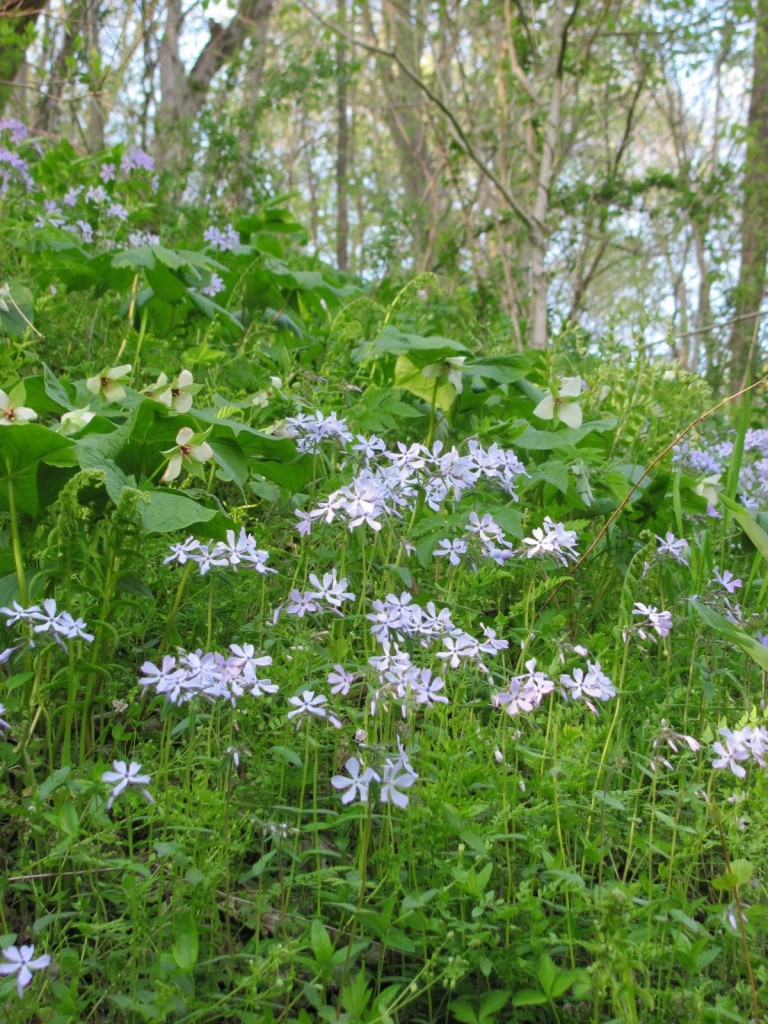The Virginia Bluebell, Mertensia virginica, at Shenks Ferry Wildflower Preserve, as fresh and blue as can be!
Winters are so much longer than Spring, so we are looking for ways to prolong Spring, to extend it somehow, so we can appreciate all of the changes, each one at a time, flower by flower, and every bright blue day and every rainshower!
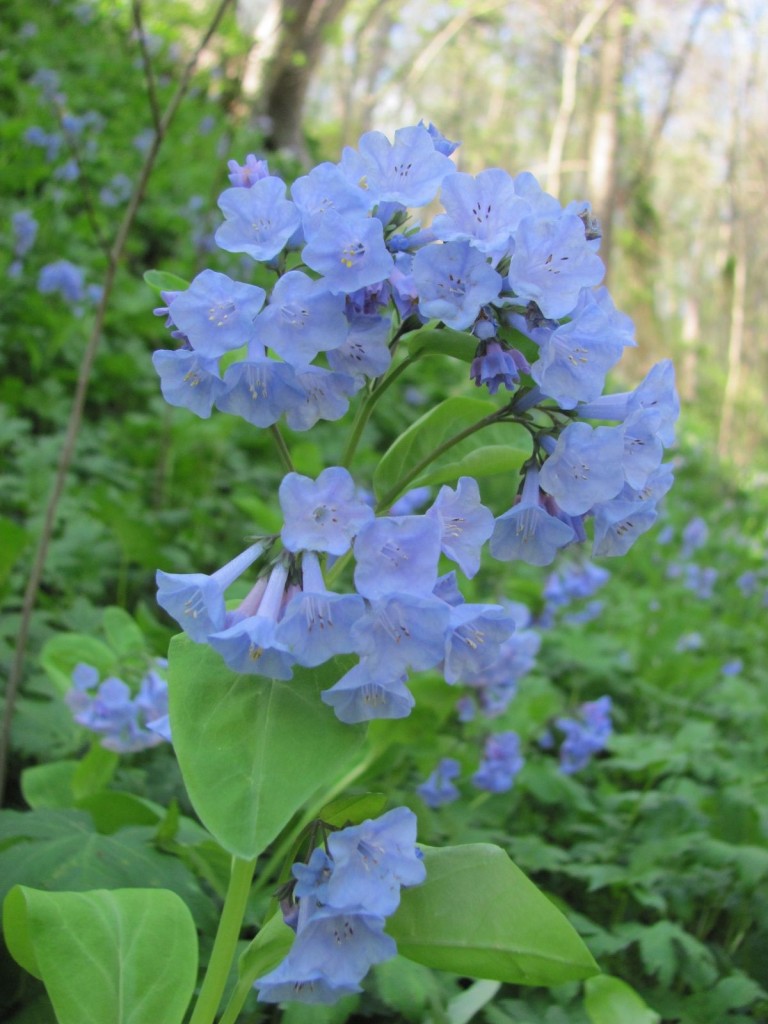
The Virginia Bluebells on the hillside, in the Susquehanna afternoon. We found the bluebells growing in massive quantities on the Susquehanna floodplain, along with the white variety and the pink varieties, all naturally occurring. We found Virginia bluebells growing alongside Mayapples and Spring Beauties, Dutchman’s Breeches and of course Trilliums. We found them blooming along the Schuylkill and the Delaware, and blooming in our own back and front yards, where we planted them, and now they are spreading and re-seeding themselves, covering once barren ground, damaged by invasives and disturbances, these cultivated Bluebells are now creating Spring, and extending it across the weary and torn urban soil.
We come to Shenks Ferry and we are reminded of our own yards full of Bluebells, how hard we have worked to repair the degraded gardens and restore them to a state of natural beauty. We gain confirmation of the conditions of natural beauty in a place like Shenks Ferry. These are conditions we want to have more of in our lives, close to us as the garden is, because natural beauty does not have to be something that is visited upon, when it can so easily be lived in, even in cities.
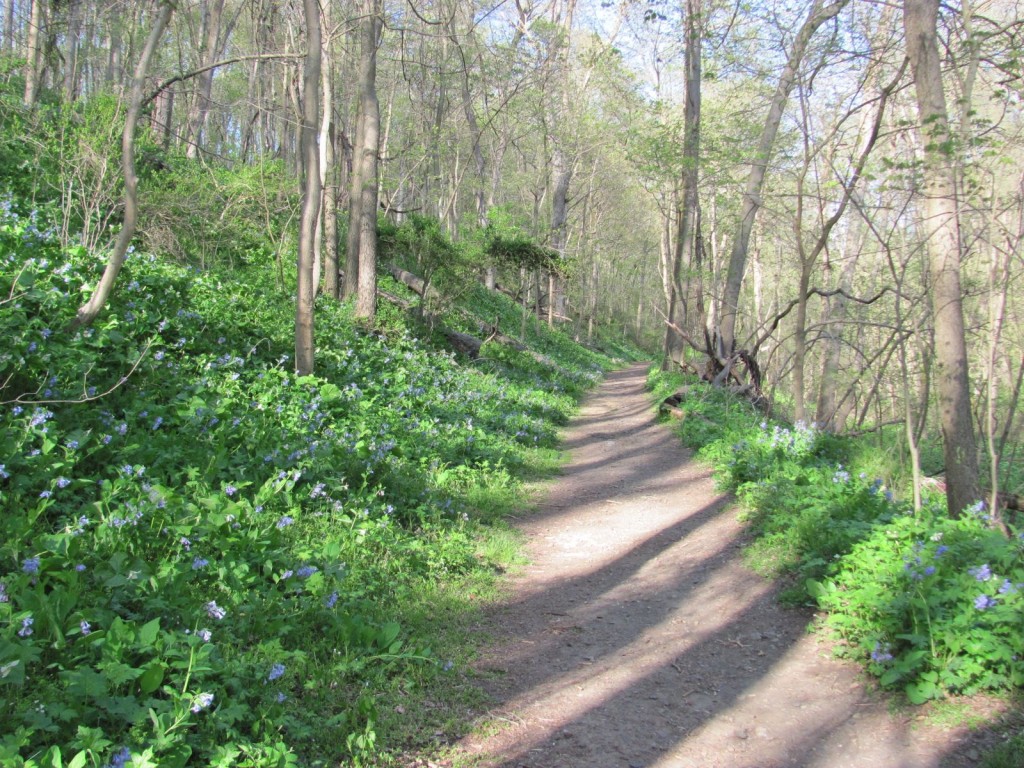
An inviting path through Spring itself- a walk into Shenks Ferry Wildflower Preserve.
It is perhaps especially in cities that the natural world can not only be preserved, but maintained- preserved by neglect to some degree, where agricultural practices have ceased in favor of development, leaving fragments of land untouched altogether-and maintained by urban dwellers aware of the needs of a natural area and eager to volunteer their efforts at upholding it.
The suburban model of land use is antithetical to natural lands conservation. Vast portions of land are dedicated to lawns. In effect, the suburbs use up much more natural lands than do cities per person. Housing development is consuming more and more land by the day. Â Maintaining these lawns requires fuel resources that require more destruction to the environment. These lawns do not contribute to the natural ecology of the region and if homeowners do not maintain them, often they can be fined!
Driving to Shenks Ferry Wildflower Preserve we pass miles upon miles of mowed lawns and monolithic agriculture and the unmanaged lands we pass are just dense with invasive vines and weeds.
Arriving at Shenks Ferry Wildflower Preserve is so pleasant and inviting. It has that Home aspect to it, as if we are at a place we can relax and enjoy the beauty of the flowers, the walk and the views.
It is really neat to see all of the same plants we have in our  Philadelphia gardens, growing in a natural setting.
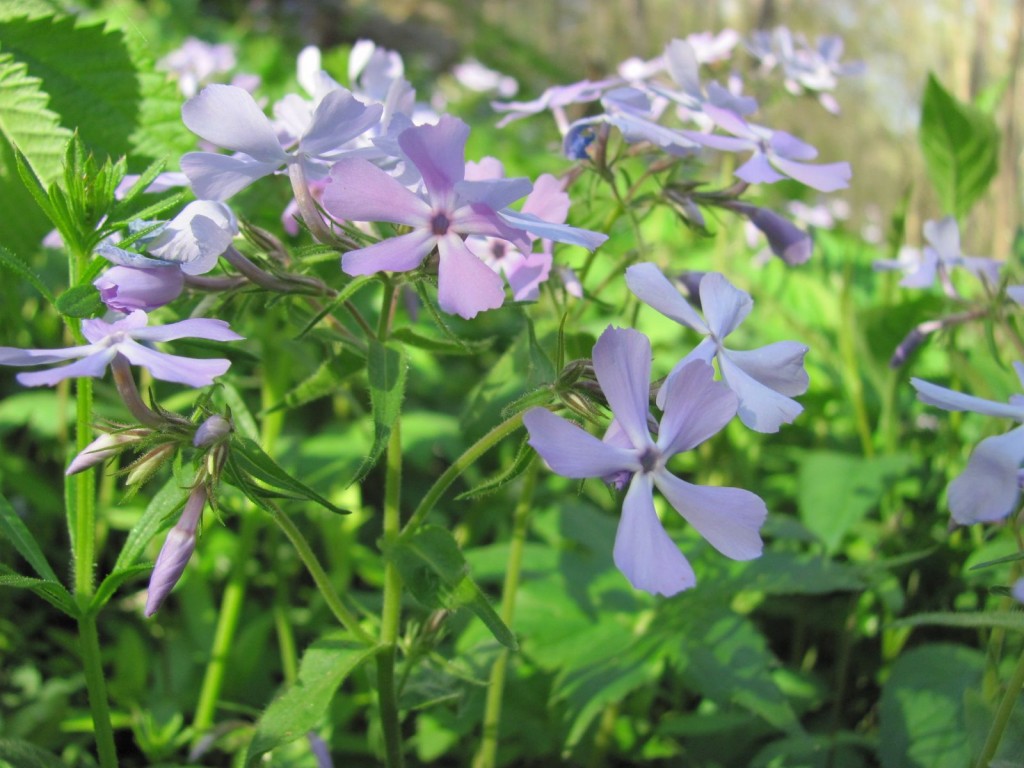
This woodland Phlox was in peak bloom at Shenks Ferry, lining both sides of the path, up and down the hillsides.
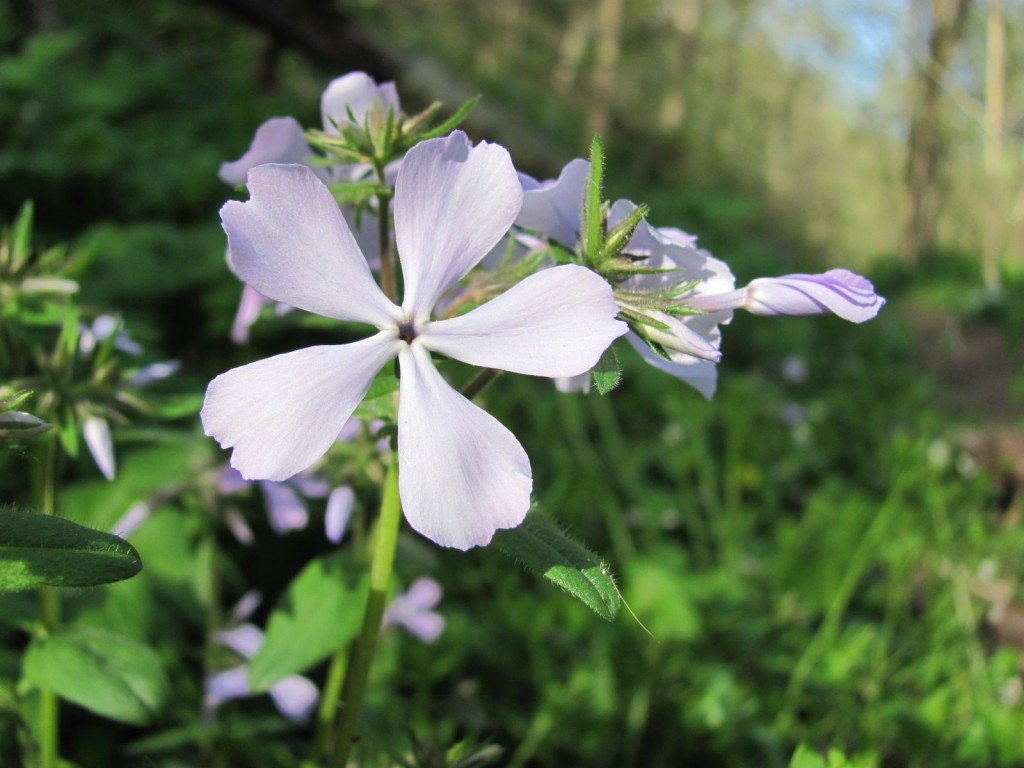
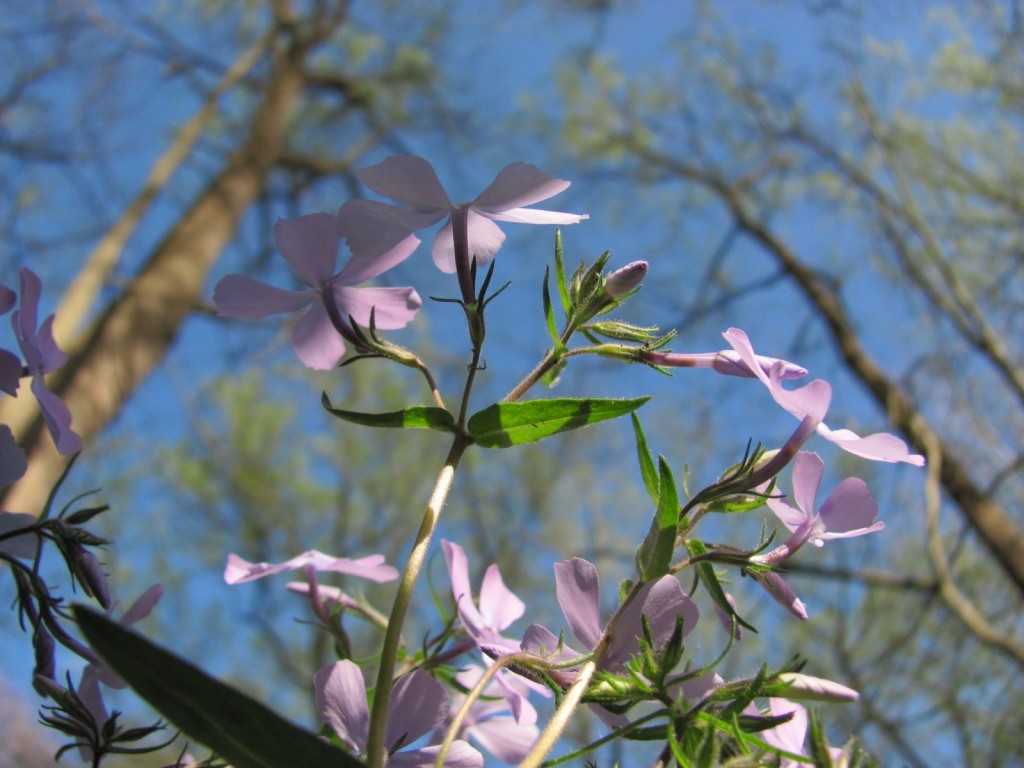
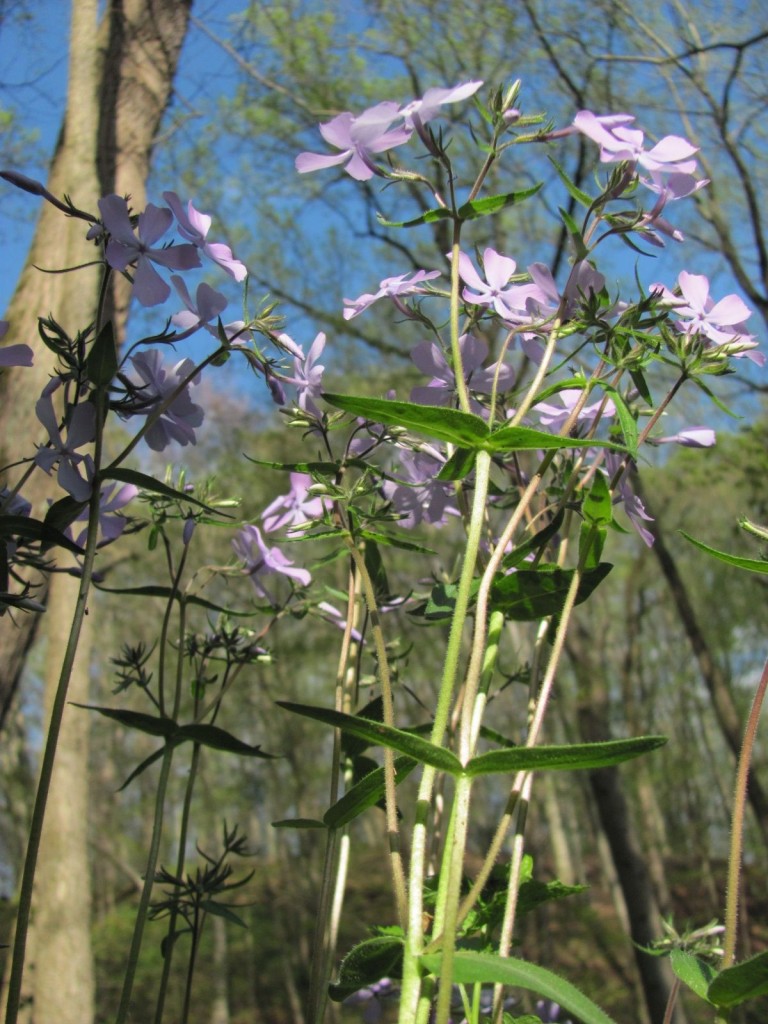
Above, the whole plant, from the ground level.
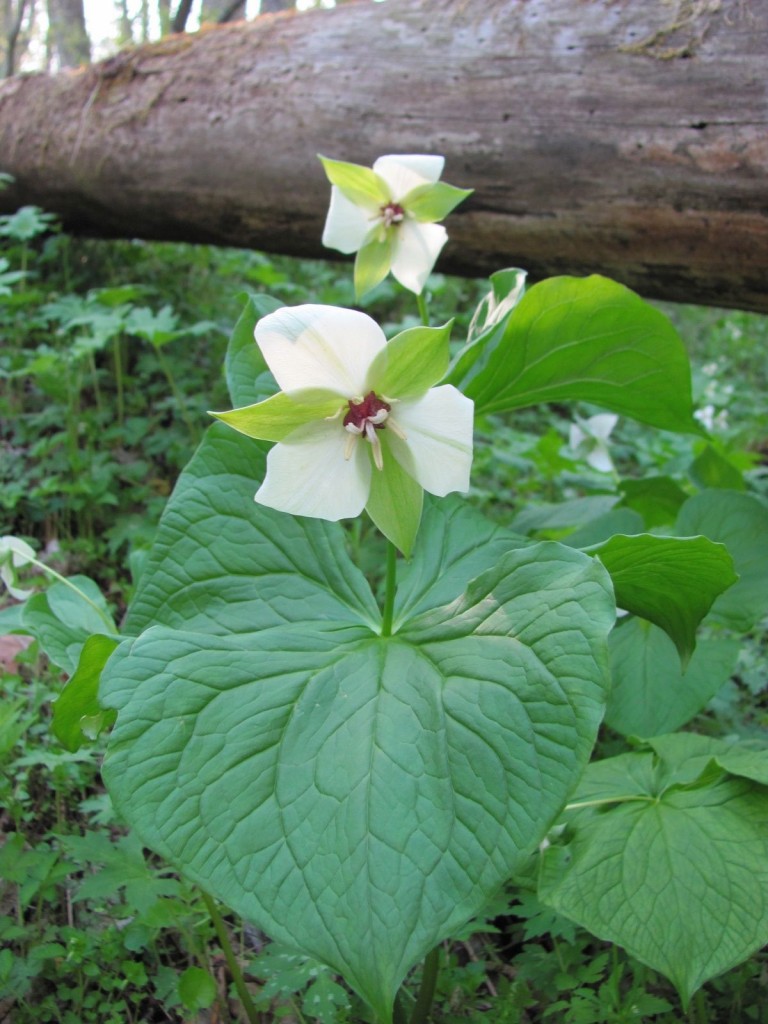
What has become very clear in our travels throughout the region in the past few years, in combination with our restoration efforts in Morris Park and our gardening adventures (most importantly), is that the beauty of a wildflower preserve can be re-created in our yards in a simple, easy way with no complications. Â In fact, the pictures in the above photographs, for the most part, could have been taken in our Philadelphia rowhouse back yards, because we have have planted and cultivated the same wildflowers. We have been able to bring this enchanting springtime forest of blooming wildflowers home to our yards. We were able to purchase these plants at the local native plant nursery, and the numerous plant sales that happen every spring. Â Like-minded friends with native plant gardens have also been generous with us, Â sharing their plants.
From lawn to garden, the richness and beauty that this transformation culminates into when the birds come with their sweet springtime songs and bright colors as they feed upon and inhabit the garden is completed. This beauty is made from your hand that sculpts the rich garden from the desolate lawn. These exquisite songbirds that grace our soundscape in the early morning are completely dependent on the plants that grow in Shenks Ferry wildflower preserve- a stunning array of plants, trees and shrubs, all of them indigenous to the region, ecologically relevant and biologically connected to an ecosystem of thousands of species of plants and insects, all of them having co-existed here for millennia. Â What a better place for the songbirds to rely upon for their life’s sustenance than the place their species has been going to for millennia. They are also potentially dependent on plants that you may have in your garden!
It is now possible to quantify which plants host certain species and which do not, and this creates a system of ranking, where certain plants may be nearly useless to their contribution to a habitat and some may be even harmful, and many being very productive, interacting with and sustaining many species of insects and the songbirds that rely upon those insects, for one example. As it turns out the plants that do the most harm or are nearly useless are from other continents and have evolved in an ecosystem with non-relevant species than the one they were recently introduced to.
What happened to the birds who relied upon the area of a suburban development that bulldozed the ecosystem and built houses with lawns? Â As with all of the plants, possibly birds also experienced something called extirpation. Extirpation is something like extinction in that it means that a specific area of land or a region has experienced a loss of a species. Â For any given area, an extirpation is very close to extinction. For a species to return to that area, the conditions would have to return to a former state, and hopefully that species extirpated would still be around to re-inhabit that area.
This can happen and it has. However, often an area that has experienced an extirpation needs to be restored to a state that can support the extirpated species, which will return as soon as it can. This is where we come in, we humans, gardeners, lovers of nature, wondering what we can do to help out, possibly questioning the lawns, thinking about ecological sustainability, loving songbirds, flowers, springtime, wishing we could be at Shenks Ferry Wildflower Preserve!
Reversing extirpation
We can do it! Humans have created the conditions that have resulted in extirpations of species, we can also be the agents of change in the restoration. At Shenks Ferry, we can see the great variety of plant species before our eyes.
Extirpation is often granted status at the state level, such as the species that have been extirpated from New Jersey. Considering that states have many sizes and can cover multiple ecological regions, it could be beneficial to the understanding of this process to view it on a smaller scale, especially if an extirpation truly occurs in a county, township, small park or natural area or a specific piece of private property, these need to be measured and given status. Consider Morris Park, Philadelphia, where sections of the park have been infested with invasives for a long enough time to crowd out the native flora, to the point that these plants no longer grow in the area they used to. These plants were locally extirpated from their ecosystem.
By removing the invasives in these areas, we have witnessed the self re-introduction of native species of plants, which now thrive in these formerly uninhabitable areas. Species such as Spicebush, the sole breeding-ground plant for the Spicebush Swallowtail butterfly, which now grows where it did not before.  This is where our garden and perhaps your garden comes in: after we cleared away the invasives in the garden and planted Lonicera sempervirens, the native red-blooming honeysuckle, which does grow in Morris Park, just next door, the Ruby Throated hummingbird began to visit our garden for the first time in our recollection!  We now have planted the native scarlet-red blooming Lobelia cardinalis, the Red Lobelia or Cardinal Flower, and the spring ephemeral, Red Columbine Aquilegia canadensis,  as well as  Bee Balm, Monarda didyma,  and we have encouraged the tubular, red-flowered  Campsis radicans vine to grow on a large brick garden wall that was crowded with the invasive Porcelain berry.
Except for the invasive exotic Porcelain berry vine, These are all plants the hummingbirds need for their survival.
We have witnessed the Hummingbirds visit these plants in our yards numerous times. Where before we had these plants there were no birds and now there are these Hummingbirds, we can only surmise that we have reversed the extirpation of this species in our own backyard. That and the Black Oaks, Tulip Poplars, Bloodroot, spicebush and the spicebush swallowtail butterflies that are now living in the area of the Park that was nothing but the invasives Multi-flora rose and Garlic mustard!
Reversing extirpation can be done, and it is so much fun and very easy, one little bit of place at a time…
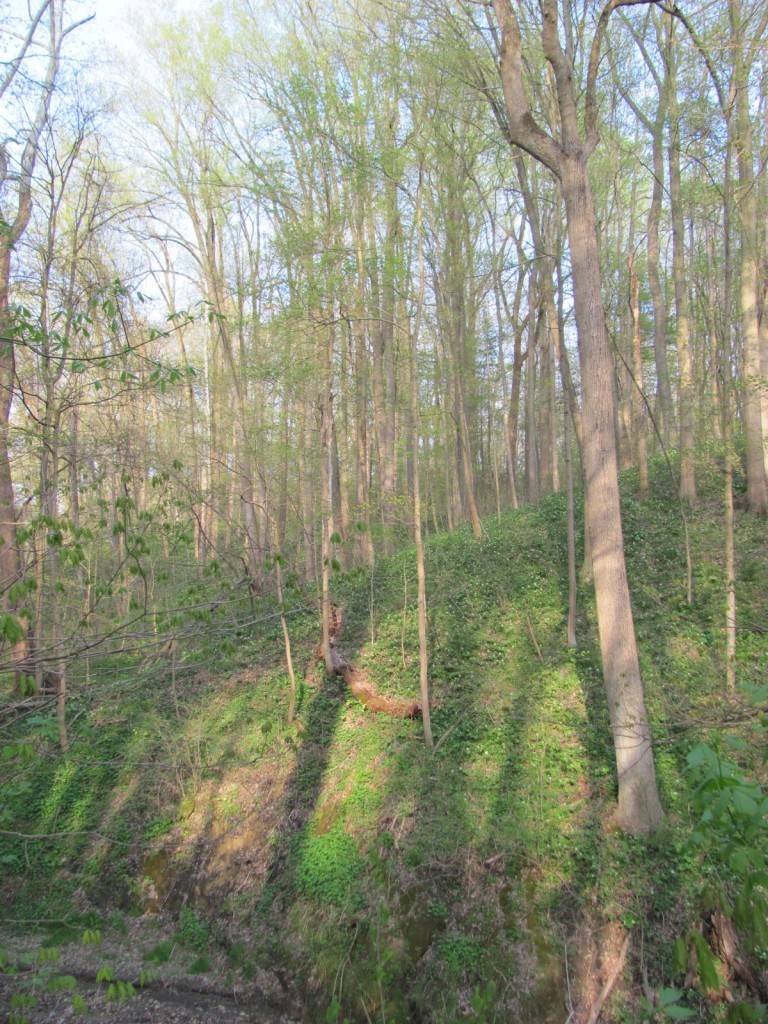
The sun has begun to set in the beautiful Lower Susquehanna Valley, and we have chosen Shenks Ferry Wildflower preserve as the location to enjoy the golden light of Spring. Hillsides covered with blooming spring flowers and the canopy of trees green with the promise of a lush summer ahead, it is very quiet except for the sweet sounds of a few songbirds.
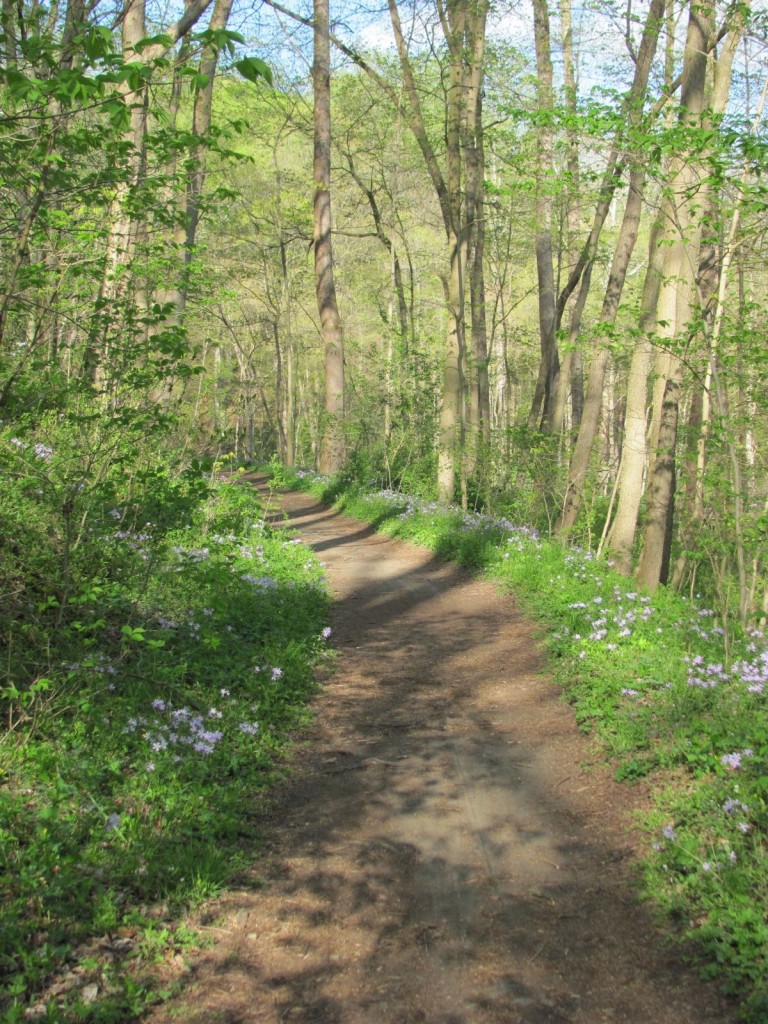
The path through Shenks Ferry is enchanting in the  Springtime early evening.
